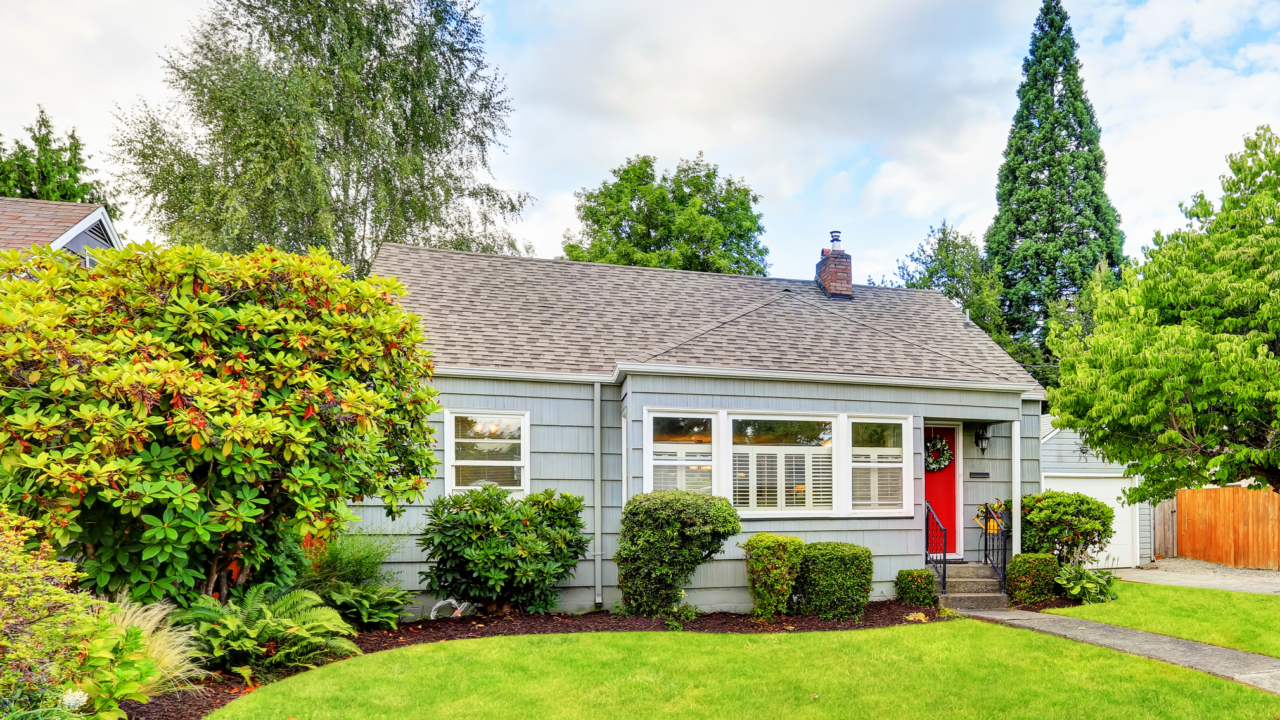How to Fix Your Credit to Boost Your Home-Buying Power
Even relatively small improvements in your credit score could make more homes affordable to you.


Written by Susan Kelleher on August 20, 2025
There are many good reasons to tend to your credit score, but few reasons offer as big a payoff as increasing your credit score to buy a home.
Your credit score has a direct impact on whether you can get a mortgage, how much you’ll pay to get that mortgage and, ultimately, how much you’ll pay for your home over time. And now we can add another to the list: Zillow research finds that improving your credit score from the lowest range to the highest could increase the number of homes you could afford in the nation’s top 50 markets by an average of 10%. In expensive markets like Los Angeles, a typical household that boosts its score from the lowest tier to the highest could widen the pool of affordable homes by nearly 29%, the analysis found.
“The more you increase your score, the more you’ll see lower closing costs, better mortgage rates and more choice of unique lenders,’’ says Zillow Senior Economist Kara Ng. “And now is an especially good time to get your credit score in shape if you’re planning to buy since the U.S. housing market continues to become more balanced for buyers.”
To give you an idea of what a higher credit score could do for you in today’s market — especially if your score is among the lower tiers — we’ll look at the national picture and show you some examples on how boosting your score could play out in some local markets.
Credit scores: the basics
Credit scores are reported as ranges that lenders use to determine creditworthiness. The scores are calculated differently by various credit reporting agencies. Here are the ranges for FICO and VantageScore, two of the most commonly used scores for mortgage lending:
| Credit rating by score type | FICO | VantageScore |
| Excellent credit | 800-850 | 720 and above |
| Good credit | 670-739 (Good) 740-799 (Very good) | 660-719 |
| Fair credit | 580-669 | 620-659 |
| Poor/bad credit | 300-579 | 619 and below |
If you don’t know your credit score, you’re in good company. Zillow research found that just 45% of Millennials and 36% of Gen Z are very confident they know their credit score. (If you’re new to the subject or don’t know your score, we’ve listed resources below to get you up to speed.)
What’s the possible payoff by repairing my credit score?
Ng says borrowers with higher scores tend to pay less interest on the money they borrow because lenders consider them safer credit risks. The lower rates help those borrowers save on their monthly mortgage payment or spend more on a home.
Here’s an example of how borrowing can become less expensive with a higher credit score. The example is for the purchase of a typical U.S. home worth $369,147.
| Credit score | Annual percentage rate for a mortgage | Difference in interest rate, compared to typical borrower score | Income needed to afford a typical U.S. home* | Difference in closing costs |
| 780-850 | 6.69 | -0.125 | $99,145 | -$1,477 |
| 760-779 | 6.76 | -0.0625 | $99,635 | -$738 |
| 750-759 | 6.82 | 0 | $100,127 | $0 |
| 720-739 | 6.91 | 0.0925 | $100,857 | $1,093 |
| 700-719 | 6.94 | 0.125 | $101,114 | $1,477 |
| 680-699 | 7.04 | 0.2175 | $101,847 | $2,569 |
| 660-679 | 7.07 | 0.25 | $102,106 | $2,953 |
| 640-659 | 7.16 | 0.3425 | $102,843 | $4,046 |
| 620-639 | 7.29 | 0.4675 | $103,843 | $5,522 |
* Based on a buyer putting 20% down; interest rates as of June 30, 2025.
Keep in mind that interest rates are constantly in flux, and any quotes you get from a lender will be influenced by your personal financial circumstances and the lender’s criteria.
Using the example above, the buyer of a typical U.S. home worth about $369,000 would pay $2,022 a month in principal and interest if their mortgage carried a 7.29% interest rate. That’s the rate listed above for the lowest credit score. At the top score, the interest rate is 6.69%, more than half a percentage point less. At the lower interest rate, principal and interest would be $1,903, a savings of $119 a month or $1,428 a year. In more expensive markets, the savings would be even greater.
Paying a lower interest rate also opens more opportunities to buy a home. The generally accepted rule of thumb says that a home is affordable if the cost of owning that home —including mortgage, property taxes, insurance and maintenance — consumes no more than 30% of your household income.
It’s important to note that the 30% ceiling is increasingly difficult to maintain given the affordability crisis across the country. Homes are far more expensive today than they were even four years ago, and the share of homes that are affordable to residents in any given metro has declined dramatically. That fact makes it all the more important to get any edge you can if you’re looking to buy. Lowering the costs of a mortgage by improving your credit score is one way to do that.
Home buyers could have more affordable options by raising their credit score
According to Zillow’s credit score analysis, median income buyers with a credit score between 620 - 639 — the lowest range generally needed for a conventional mortgage — could afford 392,823 for-sale listings in June 2025. By raising their score to 780-850 — the highest range — almost 10% more listings become affordable.
The impact can be much bigger on the local level. For example, a borrower in Los Angeles who improves their score from 620 to 700 will enjoy a 14% increase in affordable listings. If they boost their score to 760, their affordable choices will grow by 20%.
Meanwhile, in Buffalo, the effects of improved credit scores are less pronounced: only 5% more homes become affordable if credit scores rise from 620 to 700, and only 8% if they level up to 760.
How affordability improves with credit score increases
This map shows how the pool of affordable homes grows with credit score improvements. The percentage shown is the increase in homes considered affordable in the metros listed on the map as a buyer improves their credit score from the 620 range.
Are there other benefits from increasing my credit score?
Yes. They include:
- Greater choice of lenders. Zillow research found that borrowers with higher credit scores received quotes from twice as many lenders than borrowers with a credit score between 620-639.
- Lower closing costs. Lenders view borrowers with lower credit scores as higher risk, and they may offset that risk by charging higher fees at closing.
- People with higher scores are more likely to get a mortgage. According to Experian, one of the nation’s credit reporting agencies, those who successfully secure a mortgage tend to have credit scores in the range of 740-759.
- Better mortgage rates. Borrowers deemed to be better risks for lenders tend to qualify for better rates.
How can I repair my credit score?
If your credit score is established but low due to outstanding debts or uneven payments, here are four things you can do to repair and improve it:
- Get free credit reports from all three credit bureaus and contact them to correct any errors.
- Seek out a reputable company for credit repair. (Here are some things to watch out for.)
- Set up automatic payments so you never miss a payment
- If you can, pay off statement balances instead of the minimum balance
- Seek out credit counseling
If you’re just starting to build credit, here are four things you can do to build and improve your score:
- Set up automatic payments so your bills are paid on time
- Never miss a payment
- When possible, pay off the statement balance instead of the minimum balance
- Seek out credit counseling
- If you’re a renter, get credit for on-time rent payments by paying your rent through services such as Zillow
The amount of effort you spend getting your credit score in better shape will depend on where you’re starting from, says Ng. But the effort can open up more options for you as a home shopper, and pay dividends for years if you can raise your score and keep it in good shape.
“Buying a home requires a long-term plan,’’ says Ng. “If that’s what you want, you need to plan for it.”
And if you’re thinking of buying soon, there’s even more of a reason to start getting your credit score into the best possible shape. More homes are for sale now than any time since November 2019. And there are plenty of price cuts, too: In June, 27% of listings had lower prices, a record.
That’s not to say that buying is going to be easy. Record-high home prices and elevated mortgage rates remain obstacles for buyers, underscoring the importance of getting prepared as a buyer, including potentially lowering your housing costs by improving your credit score.
Resources:
- How to determine what’s affordable. Get a real-time estimate of what you can afford based on a personalized estimate and current interest rates with Zillow’s BuyAbility℠ tool.
- How to build credit.
- How to get your free credit reports.
- How paying rent can help you build credit.
- How to pay off debt fast with a low income.
- Learn what credit score you need to buy a home.
- Learn what credit score you need to rent an apartment.
For additional steps you can take, see this article on how to move your credit score higher.
*Methodology:
- A metro is deemed “affordable” if the typical home value in that metro is low enough that a median income household does not spend more than 30% on housing (mortgage, tax, insurance, maintenance), assuming a 20% down payment.
- A listing is deemed “affordable” if the list price is low enough that a median income household in that area does not spend more than 30% on housing (mortgage, tax, insurance, maintenance), assuming a 20% down payment.
- The affordability analysis includes tax, insurance, maintenance in the mortgage payments.
How much home can you afford?
At Zillow Home Loans, we can pre-qualify you in as little as 5 minutes, with no impact to your credit score.
Zillow Home Loans, NMLS # 10287. Equal Housing Lender
Get pre-qualifiedHow much home can you afford?
See what's in reach with low down payment options, no hidden fees and step-by-step guidance from us at
Zillow Home Loans.
Zillow Home Loans, NMLS # 10287. Equal Housing Lender
Calculate your BuyAbility℠
Related Articles
Get a mortgage with Zillow Home Loans
Go from dreaming to owning with low down payment options, competitive rates and no hidden fees. A dedicated loan officer will guide you until you have your keys in hand.

Zillow Home Loans, NMLS #10287. Equal Housing Lender.



